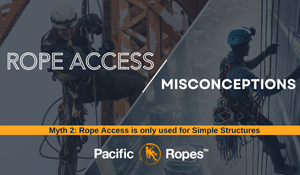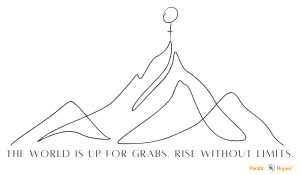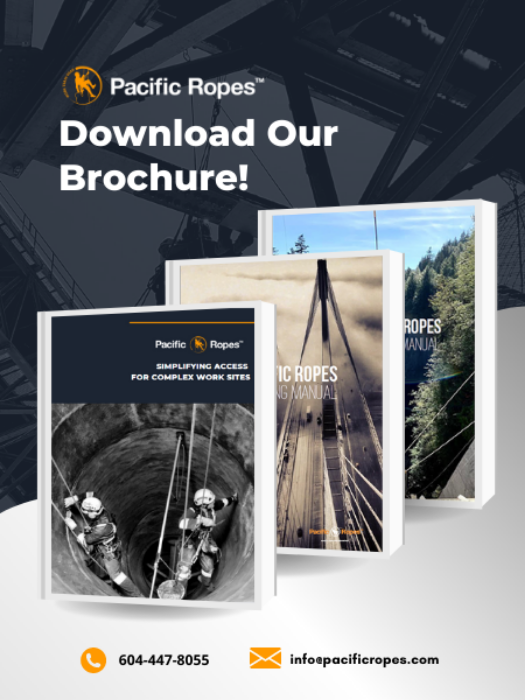At Pacific Ropes, our Rope Access program is outlined in our Rope Access Operating Procedures, also known as the RAOP. Think of it as the Occupational Health and Safety program of Rope Access. The RAOP outlines the do’s and don’ts of Rope Access procedures including things like responsibilities, documentation, training, certification, equipment standards, emergency procedures, and methodology. The most important thing to remember is that all Rope Access policies and procedures are centralized in the RAOP. It’s our Rope Access bible!
In addition to the Rope Access Operating Procedure, Rope Access paperwork for each job site ensures the RAOP is being followed and that all the health and safety checks and balances are in place.
One piece of paperwork we use is called the Risk Assessment and Method Statement, also known as the RAMS. The nomenclature of this paperwork may differ from location to location, company to company, but what remains the same regardless is that this document requires a Rope Access team to analyze the hazards of any work site and implement all necessary controls. In addition, this document covers the requirements for any Personal Protective Equipment, training, work methodology, and equipment for a particular project. If you are familiar with the COR program here in BC, it’s literally your Safe Work Practices, Safe Work Procedures, and Hazard Assessment combined. Other safety procedures written in the RAMS include how exclusion zones are set up, what type of communication the Rope Access team will be using, and what all emergency procedures are.
A second piece of paperwork that is required on any Rope Access job site is our Rope Access Work and Rescue Plan. This document describes how the Rope Access system will be used on a work site including where the ropes will be anchored and what the specifications of these anchors are. In addition, the Work and Rescue plan describes the method of rescue and evacuation procedures. Besides that, a lot of the information from the RAMS is also included such as Personal Protective Equipment, identified hazards, crew members, equipment, and training. Keep in mind that both RAMS and the Work Rescue Plan must be signed off by all workers and subcontractors on site.
The last piece of documentation to note is the Daily Field Level Risk Assessment. Hazards and controls are reviewed each day by the Rope Access Supervisor and is then shared with all crew members at the start of the day. After this daily safety meeting, everyone signs off on the sheet to acknowledge that they have been told of any new hazards on site. This practice is already common practice under the COR Program but is also common practice within the Rope Access community whether you have an OHS program or not.
This covers the most important documentation that a Pacific Ropes team has to complete in a day to ensure our team’s absolute safety on a work site (although there is still additional paperwork not included here). In all, it is important to understand that a major component to making a Rope Access system safe are our written policies and the paperwork we use to ensure our adherence to these policies.



